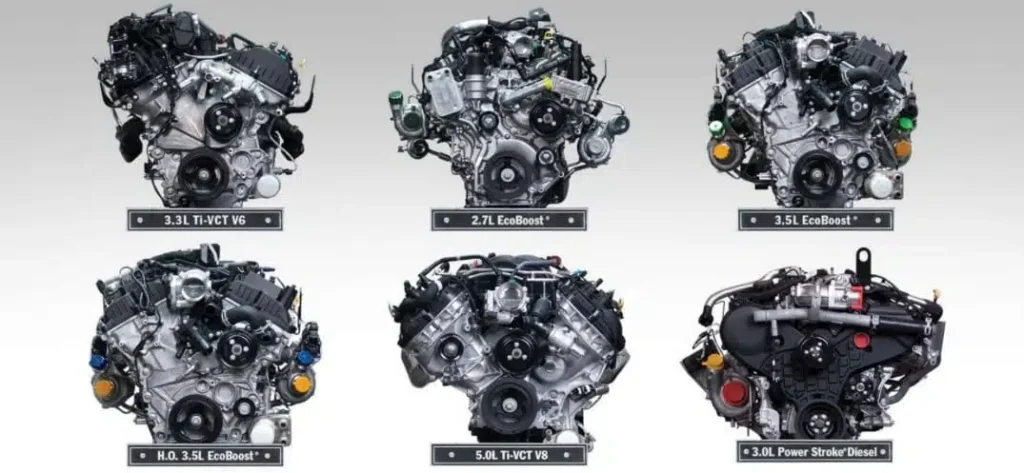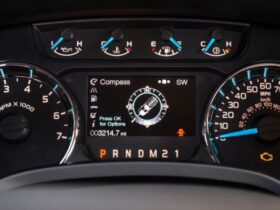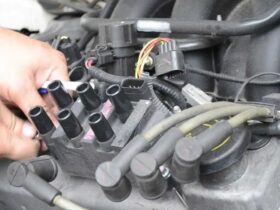The Ford F-150 has embraced cylinder deactivation technology, starting with the 2021 model. This feature is available in the 5.0-liter V8 Coyote gasoline engine, a powerful and conventional engine choice for Ford’s lineup. Cylinder deactivation aims to enhance fuel efficiency and reduce greenhouse gas emissions, aligning with federal regulations to minimize environmental impact.

This technology automatically deactivates half of the engine’s cylinders during low-power scenarios, providing a seamless transition that balances performance and economy. Below, I will explore the details of cylinder deactivation, its benefits, real-world performance insights, and comparisons to similar systems from other automakers.
What is Cylinder Deactivation?
Cylinder deactivation is an advanced technology integrated into large engines, such as the 5.0-liter V8, to improve fuel economy and reduce emissions. The system activates or deactivates cylinders based on the vehicle’s power needs.
Here’s how it works:
- The engine control unit (ECU) detects when the vehicle doesn’t require all eight cylinders.
- It closes four of the eight cylinders by shutting off their fuel injectors and valves.
- The solenoids in the engine control the process, disabling the intake and exhaust for these cylinders.
- The remaining active cylinders handle the engine load, optimizing efficiency and reducing power losses.
This entire process happens automatically, ensuring that drivers experience no interruption in engine performance. When more power is required, all eight cylinders are reactivated in milliseconds.
Benefits of Cylinder Deactivation in the Ford F-150
1. Improved Fuel Efficiency
Cylinder deactivation significantly enhances fuel economy, especially during highway cruising or trucks operating under low loads. Ford claims a 10-15% improvement in mileage, and real-world tests validate this.
- Everyday Highway Driving: A 2-3 mpg increase was observed under regular highway conditions.
- Eco Mode with Auto Start-Stop: Improved 4-5 mpg for mixed driving conditions.
- Cruise Control: At a constant speed of 75 mph on the highway, mileage improved by 7-8 mpg.
These results make the technology particularly beneficial for long-distance travel, helping drivers save on fuel costs.
2. Reduced Emissions
By reducing the engine’s operational load, cylinder deactivation minimizes the exhaust flow and raises the exhaust temperature in active cylinders. This leads to:
- Lower nitrogen oxides (NOx) emissions.
- Better conversion of pollutants in the catalytic converter.
- A reduction in greenhouse gas emissions, ensuring compliance with stringent EPA regulations.
3. Maintained Performance
Despite reducing the number of active cylinders, the system doesn’t compromise the vehicle’s power during high-demand situations. The engine operates in full V8 mode when towing or carrying heavy loads, delivering the required torque and horsepower. This ensures that the truck’s capability remains unaffected.
Ford’s Innovations in Cylinder Deactivation
How Ford Improved on the Technology
Ford developed its cylinder deactivation system to address common issues encountered by competitors like General Motors (GM) and Ram, such as increased oil consumption and vibration problems.
- Upgraded Oil Pumps: Ford equipped its engines with enhanced oil pumps to maintain proper lubrication during cylinder deactivation.
- Improved Ring Packs: The engine’s piston ring packs were redesigned to maintain compression for extended periods.
- Simplified System: Unlike GM’s Dynamic Fuel Management, which deactivates a variable number of cylinders, Ford’s system switches between 4-cylinder and 8-cylinder operation modes. This simplicity minimizes wear and tear and reduces the likelihood of malfunctions.
Driving Experience with Cylinder Deactivation
While driving a 2021 Ford F-150 equipped with this feature, I found the transition between 4-cylinder and 8-cylinder modes seamless. Here are my observations:
- Performance: The switch between modes is nearly imperceptible. However, the engine produces a slightly louder hum during cylinder deactivation, which is subtle and does not detract from the driving experience.
- Efficiency: Long drives on highways with cruise control highlighted the feature’s fuel-saving potential.
- Reliability: The system worked consistently without triggering warning lights or causing operational issues.
Can Cylinder Deactivation Be Turned Off?
While cylinder deactivation improves fuel economy and emissions, some drivers may wish to disable it. Turning it off, however, is generally not recommended due to its environmental benefits and compliance with federal regulations.
Methods to Disable Cylinder Deactivation
- Battery Disconnection Trick:
- Unplug the small cable connected to the battery’s negative terminal.
- This disrupts the battery monitoring system, indirectly disabling cylinder deactivation.
- Drawback: The truck will display a persistent warning about battery service and won’t detect alternator failures.
- Using FORScan Software:
- FORScan allows you to reprogram the ECU to permanently disable cylinder deactivation.
- This method requires technical expertise and may void your warranty.
Comparison with Other Automakers
General Motors and Ram were early adopters of cylinder deactivation technology, but they encountered challenges:
- GM’s Dynamic Fuel Management (DFM): Deactivates various cylinders, increasing complexity and oil consumption.
- Ram’s System: Faced reliability concerns and higher maintenance costs.
Ford’s approach prioritizes simplicity, durability, and fewer mechanical complications, making it more reliable than its competitors’ implementations.
Future of Cylinder Deactivation in Ford Trucks
As regulations tighten, this feature can expand across more engine options and model years.
For detailed technical specifications and maintenance tips, refer to the official Ford F-150 owner’s manual available at Ford Support. Additional technical insights can be obtained from the Ford Workshop Manual, which provides in-depth coverage of engine systems and cylinder deactivation technology.






Leave a Reply
View Comments